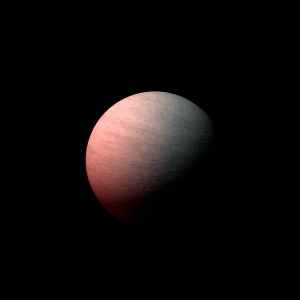|
|
Space Astro
|
Info for exoplanet "Tisycopaa"
| Scientific (actual) data |
|---|
| Name | HATS-33 b |
| Planet status | Confirmed |
| Planet mass | 1.192 |
| Radius | 1.23 |
| Orbital period | 2.54956 |
| Semi major axis | 0.03727 |
| Orbit eccentricity | 0.08 |
| Inclination | 87.62 |
| Discovered | 2016 |
| Updated | 2016-07-11 |
| Tzero tr | 2456500 |
| Impact parameter | 0.33 |
| K | 170.1 |
| Temperature (kelvin) | 1429 |
| Publication | Published in a refereed paper |
| Detection type | Primary Transit |
| Mass measurement type | Radial Velocity |
| Radius measurement type | Primary Transit |
| Star name | HATS-33 |
| Right ascension | 294.63° |
| Declination | -55.33° |
| Mag v | 11.9 |
| Star distance | 355 |
| Star metallicity | 0.29 |
| Star mass | 1.062 |
| Star radius | 1.022 |
| Star age | 3 |
| Star temperature | 5659 |
| Wikipedia article | HATS-33 b |
Back
| |
| Fictional info (?) |
|---|
| Suggested name | Tisycopaa |
| Planet type | Hot gas giant |
| The water has probably photodissociated, and the free methane has been swept into interplanetary space by the solar wind because of the lack of a planetary magnetic field.
Planet is inhabitated by harmless advanced bacteria that survive in caves by killing smaller pray if they can. Most Siardora are similar to the Nushe Pero Sete, have 7 legs and vary in length from 60 to 100 cm. The Siardora are able to live at temperatures from -40 to 10°C and even a limited degree of radiation which is common near the poles. |
| Estimated population | 0.7 |
| Atmosphere | Methane | 42% |
| Carbon dioxide | 34% |
| Water | 23% |
| Oxygen | 0.29% |
| Atmospheric pressure | 11 bar |
 |
| No known satellites |
| Google search for Tisycopaa |
|
Website by Joachim Michaelis
|
|
|
|